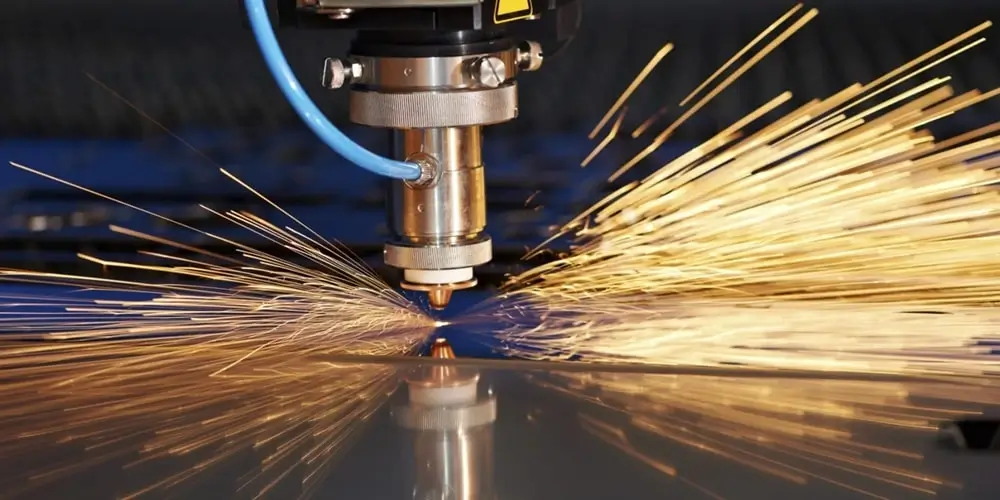
Lasers are beneficial for engraving&cutting most materials such as wood, glass, leather, and acrylic. For that reason, laser engraving/cutting machines are becoming an indispensable component of today’s production facilities, as well as small businesses. A high-powered laser machine’s performance and lifespan depend on various factors such as frequency of use, routine cleaning, and maintenance. However, users often overlook a crucial element to guarantee their machine’s long-term functionality: effective cooling.
While there are many industrial water chiller products on the market, choosing a reliable laser water chiller is the best way to extend your laser tube’s life.
Let’s take a look at how industrial water chillers for laser machines work and determine their role in improving your laser engraver’s durability and performance.
How Are Lasers Made?
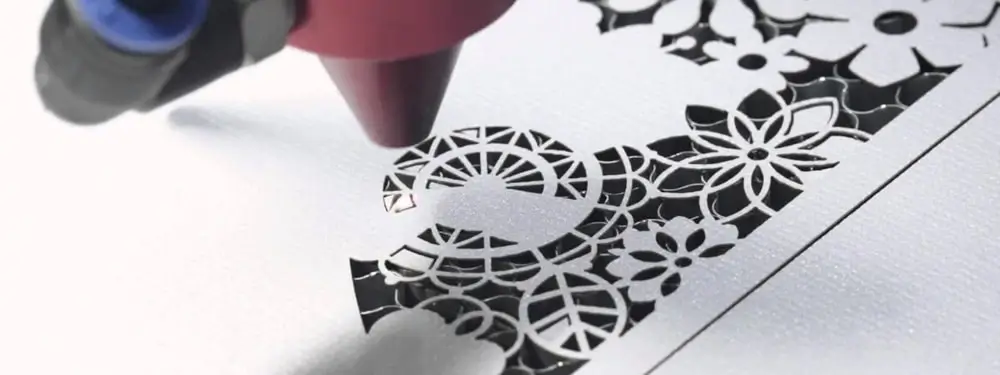
Regardless of the type of laser being utilized, the laser generation process is always similar.
To generate a laser beam, the device must possess:
- A collection of atoms in a liquid, solid or gaseous state that can be stimulated to absorb energy.
- A means of stimulating the excitable portions of theses atoms (electrons)
The laser production principle requires the introduction of energy in the form of an electric pulse into a laser cavity. This produces photon energy, which is rapidly absorbed by the electrons present within, causing them to perform a quantum leap and jump to a higher energy state. This activity is transient occurring in a matter of milliseconds with the electrons rapidly returning to their base energy state.
Simultaneously, electrons returning to base energy levels will emit photons of light that can equally go on to stimulate other electrons in their base state thus replicating and further amplifying the initial reaction.
Laser devices usually incorporate mirrors within a laser tube that help sustain a steady stream of photons while producing a concentrated laser beam.
Why Do Lasers Produce Heat?
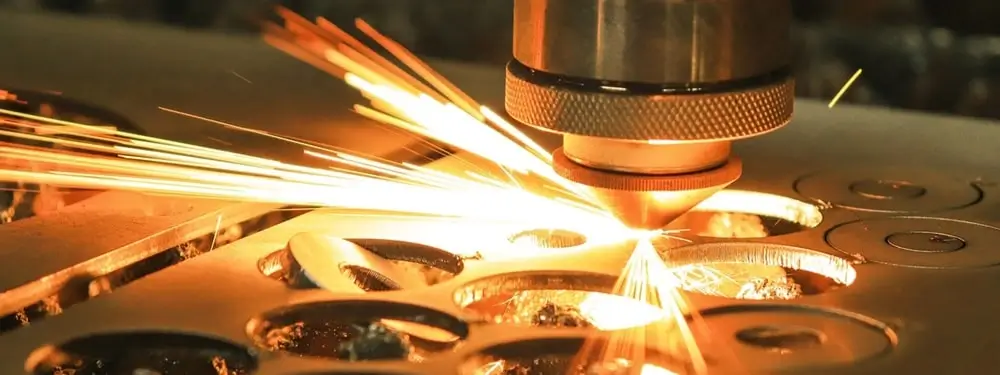
After learning how to generate laser beams, it is clear that the production of light energy is always associated with some degree of heat generation. Considering that laser light is an amplified form of light energy, it follows that the amount of heat generated during its creation will be significantly higher.
Industrial laser devices generate enormous amounts of heat that can cause damage to the material being worked on as well as the laser components themselves. As a result, laser machine owners must ensure they maintain their devices within optimal temperature ranges by using an cooling device.
Optimal CO2 Laser Temperatures
Operating CO2 lasers at high temperatures will diminish their accuracy, and stability. The increased thermal stress will damage laser tubes resulting in costly repairs or outright equipment replacement. Also, exposing sensitive materials to uncontrolled laser temperatures will alter the manufacturing process resulting in defective final products.
Most industrial CO2 lasers can be safely and efficiently operated within the temperature range of 59 °F to 77 °F.
Protect Your Laser Tube
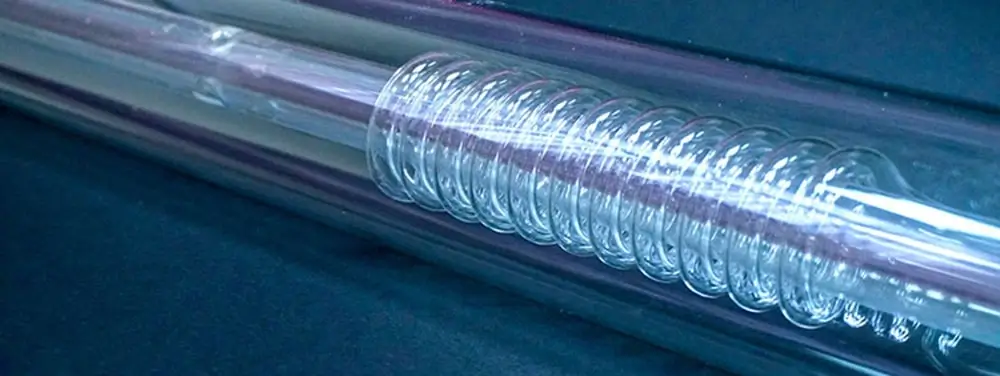
CO2 laser tubes can be expensive. From a 40W laser and up to 150W, a new tube can set you back $200 to $2,000, or even more in some cases. Protecting your laser machine with a high-performance laser chiller is a wise decision. There are many DIY laser cooling methods out there like an ice water bucket with a water pump for CO2 lasers. While this DIY laser cooling equipment might work fine for small laser machine, it will not perform with the same consistency of a laser water chiller on a higher wattage laser. Why would you spend hundreds or thousands of dollars on a new CO2 laser tube only to let it overheat from inadequate cooling equipment? Never compromise on your laser tube cooling system — your wallet will thank you later.
Why You Need a Water Laser Chiller for Your Engraver/Cutting Machine
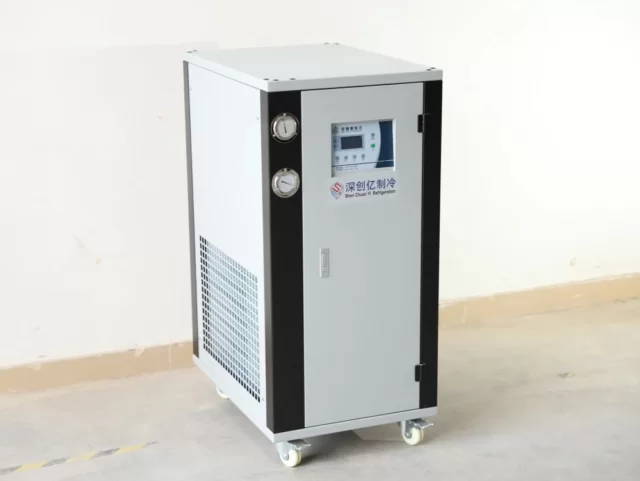
The most effective way to maintain your CO2 laser operating efficiently for as long as possible is to incorporate a laser chiller device. These industrial water chillers will provide the thermoregulation required to prevent component breakdown or product damage, by eliminating excess heat energy produced during laser operation.
What you really need is an industrial water chiller. These specialized laser water chillers perform water circulation cooling on the machine’s laser generator and regulates its temperature to prolong its life. Recirculating chillers utilize active refrigeration for applications that require precise temperature control or below ambient temperatures. Standard models come with cooling capacities ranging from 600W to several KWs.
How Do Industrial Laser Chillers Work?
So, how do chillers work to keep your laser technology stable?
Standard laser water chillers possess a refrigeration unit that channels coolant to the process laser tube where heat exchange occurs cooling the laser to optimal temperatures. The heated cooling fluid is returned via piping to the refrigeration unit where the absorbed heat is eliminated thus regenerating the coolant for a new cycle of heat exchange with the laser device.
What Size Water Chiller Do I Need?
Many laser chiller industrial manufacturers provide a vague description of features and specs that make it difficult to choose the best laser cooling equipment for you. If you choose a cheap or mediocre product from an unknown brand, the chiller could spell disaster for your laser engraving machine.
The first step to select the best chiller industrial brand is to determine the water cooling requirements for the laser. Make sure you buy a laser water chiller that comes with clear information about its cooling capabilities in the operating manual. Not to mention, cooling capacity determines the chiller size. The heat load is the amount of waste heat that a laser chiller removes from a laser engraving machine. Typically, this value is in BTU/hr or watts. The chiller you choose must be powerful enough for the laser engraving machine you are using. We recommend a 3000 chiller for 50-100W machine or something ranging between 5000 and 5200 for above 100W. However, if you run a laser engraving business full time, you’ll want a 5000 chiller even for 50-100W laser machines.
There are a few other factors to consider, such as temperature display, temperature monitors with high/low alarms, water flow rates, etc. Other considerations, such as ISO 9001 certification and warranty, can help you make the most out of your industrial water chiller.
You can also use our chiller size calculator to see what size is suitable for your laser machine.
7 Key Features of Industrial Laser Water Chillers
Choosing a quality laser water chiller can add years to your laser engraving machine’s life and improve processing accuracy. Here are a few important features that can help you prolong your laser engraver’s life:
1. Water Flow
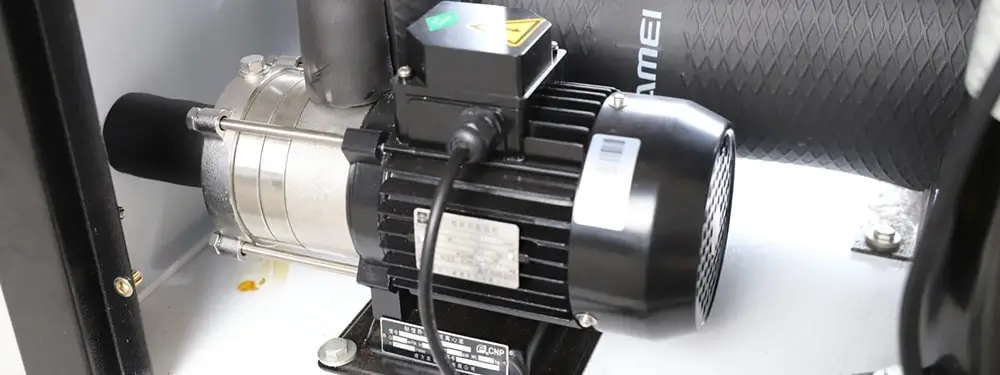
A consistent flow of ambient-cooled water to the laser head or a cold plate is adequate for a medium-power laser. However, a recirculating industrial water chiller is the most efficient laser cooling equipment for high-powered lasers.
2. Built-in Alarm
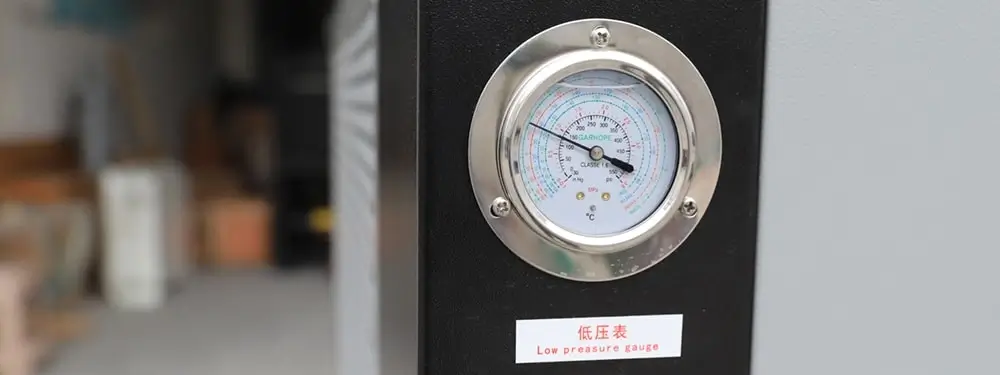
Low/high-temperature alarms can prevent any damage to your laser engraver. Moreover, a computer, visual, and audible alarm can signal the fault. Both shutoff and low-flow alarm features can protect the laser and water chiller from costly damages.
3. Digital Display
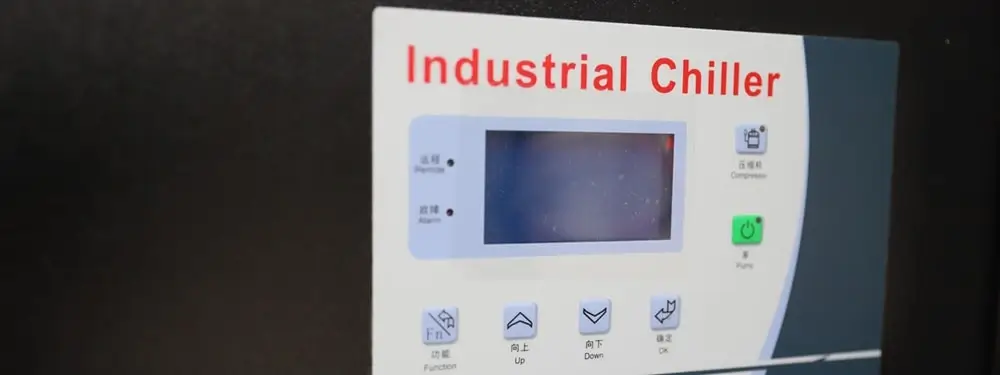
Digital temperature displays offer a constant update so you can determine the machine’s temperature levels. However, if you’re running a DIY laser cooling system, you can always install a thermometer.
4. Observation Window
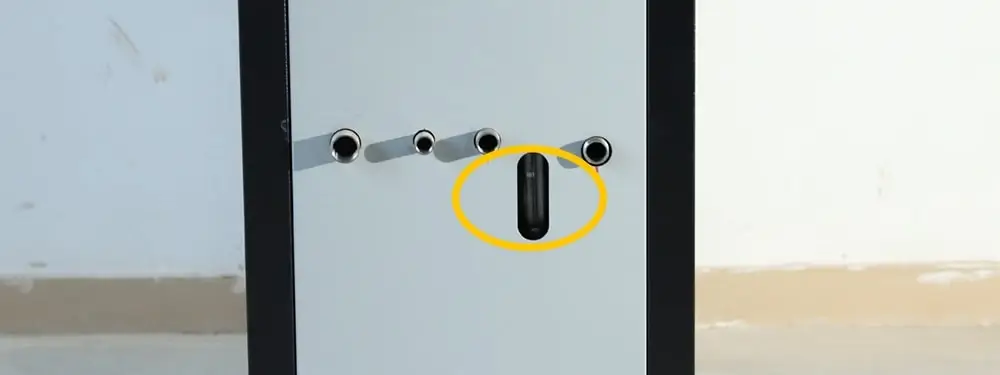
Since industrial water chillers have completely enclosed systems that prevent evaporation, an observation window lets you easily monitor your laser chiller’s water level.
5. Do Water Chillers Make A Lot of Noise?
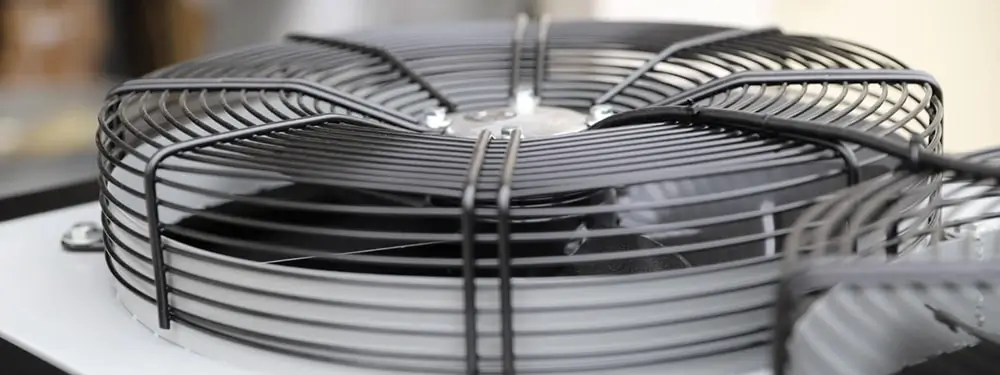
Before buying, check the rated decibel (dB) level in the manufacturer’s specifications. After all, you may not want to deal with extra noise of laser cooling equipment in your workshop.
6. Convenient Mobility
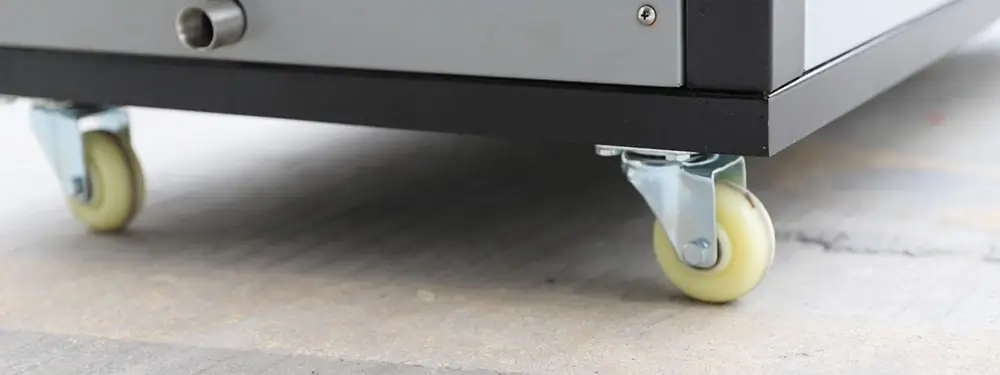
If you frequently need to relocate your laser chiller, choose one with caster wheels for mobility. Locking casters keep the chiller stable during operation.
7. What About A Warranty?
A laser chiller’s credibility significantly depends on its warranty. Many industrial water chillers offer one-year protection with technical support. Choose brands with ISO 9000 registration and products with industry certifications such as CE and CSA.


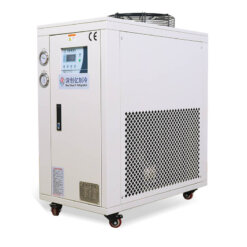
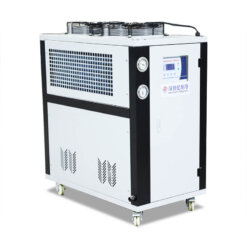
Máy sử dụng được 1 năm giờ máy làm mát rất ồn , xin cho biết cho biết nguyên nhân và cách khắc phục
first, you might need to check if it’s the noise from the axial fan, clean it.
second, you can check if it’s the compressor making extra noises, true, then have some maintenance with it.